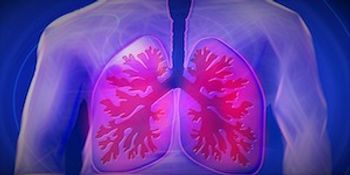
Naturally produced melatonin tends to decrease with advancing age, so supplementation is a potential intervention for metabolic syndrome.

Naturally produced melatonin tends to decrease with advancing age, so supplementation is a potential intervention for metabolic syndrome.

The American Journal of Medicine has published a new article that describes the reemergence of neurosyphilis, and identifies HIV coinfection in individuals in Western countries as a key risk factor.

Varicella-zoster virus can develop into or present as herpes zoster ophthalmicus. Clinicians need to initiate oral antiviral therapies within 72 hours of the onset of ocular involvement.

Studies suggest vitamin D deficiency is associated with higher risk of pain, so shouldn’t vitamin D supplementation decrease pain?

Atherosclerosis affects both genders, but its profile in women is unique. For example, 42% of women who have heart attacks die within a year, compared with 24% of men.

A lack of education leaves 31% of asthma/COPD patients with poor inhaler procedures.

Experts are beginning to see that some phenotypes respond better to certain treatment approaches for asthma.

Motivational interviewing—a patient-centered method to enhance intrinsic motivation by exploring, and resolving ambivalence—has gained a good reputation for increasing adherence.

As a result of the persistent opioid epidemic, a current harm reduction initiative focuses on reducing adverse consequences in drug users.

Administering high doses of vitamin D over relatively short timeframes was associated with increased likelihood of toxicity, in a recent study.

In a recent study, researchers set out to identify the reasons why prescribers and pharmacists continue to prescribe NS β‐blockers despite the guidelines recommending against it.

Half of people who have diabetes eventually develop diabetic peripheral neuropathy, and the warning signs are sensory symptoms that start in the distant periphery and progressing in a characteristic 'glove and stocking' way.

Point-of-care testing (POTC) increase patients' access to care and treatment. In 2 areas—influenza and streptococcal pharyngitis—POCT is available, but not used as often as it could be.

Kidney disease occurs along a continuum, and for people who have diabetes, the risk of developing kidney disease is significantly elevated.

Should emergency room clinicians use a breath-actuated nebulizer (BAN) or is a metered-dose inhaler (MDI) a better choice?

An emerging area of investigation in asthma and chronic obstructive pulmonary disease is use of statins.

When individuals who are at risk for HIV use PrEP, and use it appropriately, risk of infection is significantly lowered.

Researchers have published a review article in the journal Aging Male that implicates folic acid as a contributing factor in erectile dysfunction.

A study compares changes in medication regimen complexity in patients with uncontrolled T2D who were referred to a collaborative pharmacist-endocrinologist.

The utility of determining a patient's asthma phenotype is a current research priority, since various phenotypes seem to respond differently to interventions and medication.

The Conference on Retroviruses and Opportunistic Infections (CROI) annually assembles researchers from around the world to share the latest studies, important developments, and best research methods in the ongoing battle against HIV/AIDS, and related infectious diseases.

A study published in The Consultant Pharmacist looks at the possibility that community pharmacies could increase pneumococcal vaccine uptake.

Obstetricians and general practitioners most often field questions from women who have asthma, as this condition is more common than most other chronic conditions in young people.

People living with HIV are at elevated risk for hyponatremia, the most common electrolyte disorder seen in hospitals.

Fewer than 1 in 10 pharmacists talked to most patients about asthma action plans routinely.

Milk thistle, which contains an active component called silymarin, has been used for centuries for disorders of the liver, and bile duct.

Clinicians who work with adolescents who have asthma report numerous adherence barriers.

Legalizing the sale of syringes creates accessible, affordable, and reliable sources of sterile syringes for injection drug users (IDU).

Pharmacies, and pharmacists across the nation need to be in a constant state of readiness for the next influenza pandemic outbreak.

Before a pertussis vaccine was widely available, about 200,000 American children contracted this highly contagious acute respiratory tract infection annually, and between 4000 and 9000 children died each year.